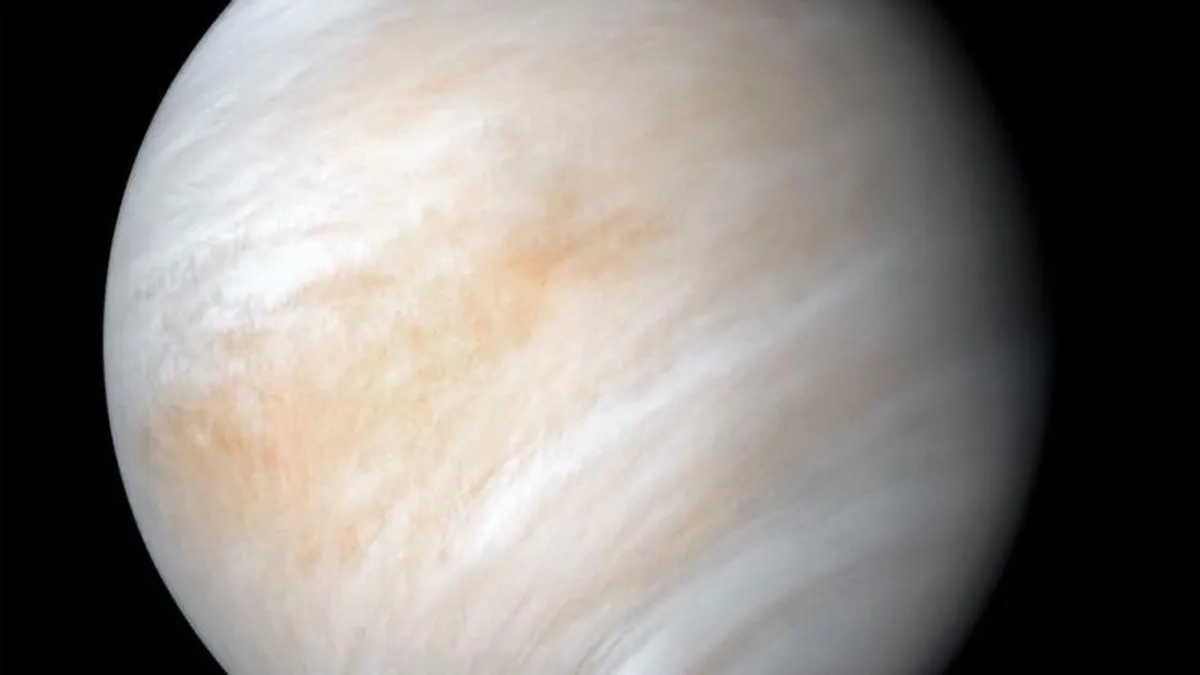
Sign up for CNN’s Wonder Theory science newsletter to explore the universe with updates on fascinating discoveries and scientific advancements. This week, a piece of Soviet space debris, known as Cosmos 482 (also spelled Kosmos 482), is expected to make its way back to Earth after malfunctioning during its mission to Venus over 50 years ago.
Despite its historical significance, much about Cosmos 482 remains shrouded in mystery. Current projections suggest that this object will reenter the Earth's atmosphere around May 10. However, uncertainties regarding its shape and size, along with the unpredictable nature of space weather, add an element of unpredictability to the situation. Researchers are particularly interested in determining which part of the vehicle will reenter, with many believing it to be the probe or “entry capsule” designed to withstand the extreme conditions on Venus—where atmospheric pressure is 90 times that of Earth.
The potential for Cosmos 482 to survive its unexpected return is not negligible. As noted by Dr. Jonathan McDowell, an astrophysicist at the Harvard-Smithsonian Center for Astrophysics, the heat shield of the Soviet reentry capsule could enable it to survive the intense conditions of reentry, making it possible for it to reach the ground intact. Although the risk of it striking someone is minimal, McDowell humorously cautioned, “you wouldn’t want it bashing you on the head.”
The Soviet Space Research Institute (IKI) was established in the mid-1960s during the height of the 20th-century space race against the United States. The IKI initiated the Venera program, which aimed to send a series of probes to Venus in the 1970s and 1980s. While several of these probes successfully transmitted data back to Earth before ceasing operations, only one spacecraft, V-71 No. 670, managed to operate on the planet's surface for approximately 50 minutes. Meanwhile, V-71 No. 671 failed to make its journey to Venus, resulting in multiple pieces of debris, including Cosmos 482.
NASA's tracking indicates that the pieces of debris from V-71 No. 671 are likely to be the cause of Cosmos 482's current trajectory. Experts like Marlon Sorge, a space debris expert from The Aerospace Corporation, noted that Cosmos 482 has exhibited a dense structure. "It is quite dense, whatever it is, because it had a very low point in its orbit, yet it didn’t decay for decades," he stated, highlighting the object's potential weight and mass.
The chances of Cosmos 482 causing significant harm upon reentry are estimated to be around 1 in 25,000, according to calculations by The Aerospace Corporation. This is a relatively low risk compared to other pieces of space debris that reenter the atmosphere annually. If it does make landfall, experts anticipate it could land anywhere within 52 degrees North and 52 degrees South latitude, which encompasses various prominent landmasses, including parts of the USA, Europe, and Asia. However, with 70% of the Earth covered in water, the likelihood of it landing in an ocean is substantial.
In the event that Cosmos 482 lands on solid ground, Sorge has emphasized the importance of safety. He advises bystanders not to approach the debris, as it could potentially leak dangerous fuels or pose other hazards. "Contact the authorities," he urged, "Please don’t mess with it." Furthermore, Parker Wishik from The Aerospace Corporation highlighted that any surviving debris would remain under the ownership of Russia, as outlined by the 1967 Outer Space Treaty.
The anticipated reentry of Cosmos 482 serves as a reminder of the ongoing need for effective space debris mitigation. Wishik notes, “What goes up must come down,” underscoring the importance of dialogue within the global space community to ensure that space exploration does not lead to uncontrolled crash landings in the future. The legacy of Cosmos 482 reminds us that decisions made today can have far-reaching effects for decades to come.